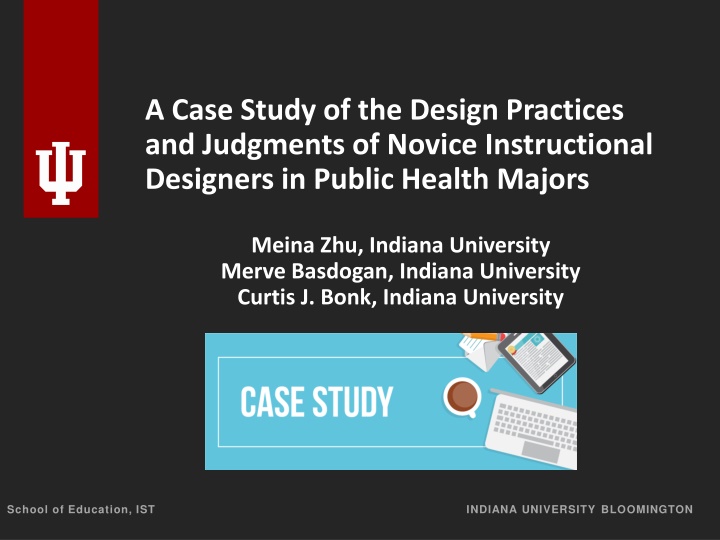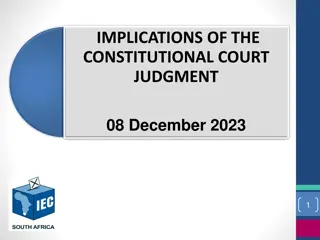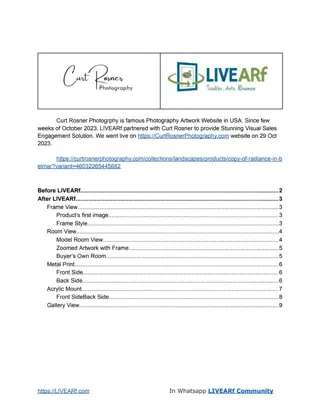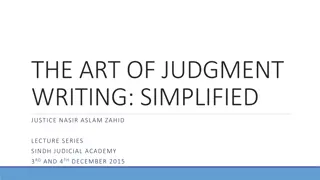
Design Practices and Judgment of Novice Instructional Designers in Public Health Majors
This case study explores the design practices and judgments of novice instructional designers in public health majors. It discusses the challenges novices face in integrating different issues, the importance of design judgment in the design process, and the need for understanding how novices frame and solve design problems. The study highlights the significance of preparing competent instructional designers to tackle real-world problems in instructional methods.
Download Presentation

Please find below an Image/Link to download the presentation.
The content on the website is provided AS IS for your information and personal use only. It may not be sold, licensed, or shared on other websites without obtaining consent from the author. If you encounter any issues during the download, it is possible that the publisher has removed the file from their server.
You are allowed to download the files provided on this website for personal or commercial use, subject to the condition that they are used lawfully. All files are the property of their respective owners.
The content on the website is provided AS IS for your information and personal use only. It may not be sold, licensed, or shared on other websites without obtaining consent from the author.
E N D
Presentation Transcript
A Case Study of the Design Practices and Judgments of Novice Instructional Designers in Public Health Majors Meina Zhu, Indiana University Merve Basdogan, Indiana University Curtis J. Bonk, Indiana University School of Education, IST INDIANA UNIVERSITY BLOOMINGTON
Background Increasing need for the professional instructional designer (Richey, Fields, & Foxon,2001) urges educators to prepare competent ID professionals in instructional methods through solving real-world problem (Dijkstra, 2005; Jonassen & Hernandez-Serrano, 2002). Novice instructional designers (ID) are more likely missing integrating and connecting the different issues as compared to experts who can catch the underlying principles and connections (Ertmer & Stepich, 2005). INDIANA UNIVERSITY BLOOMINGTON
Background Rowland (1992) indicated that experts spend more time on problem analysis. Novices, attempt to solve the problem quickly based on the surface difference. Therefore, they commit to a solution quickly and give up the solution as facing challenges. In addition, educators often provide prescriptive guidance to novice instructional designers through instructional design theories (Reigeluth & Carr-Chellman, 1999; Reigeluth, Beatty, & Myers, 2016), principles (Merrill, 2002; Silber, 2007), and models (Branch, 2010). INDIANA UNIVERSITY BLOOMINGTON
Background However, most instructional design theories emphasize that there is no absolute correct design theory or model for designers, and they must make judgments by themselves in design (Nelson & Stolterman, 2012; Smith & Boling, 2009). These judgments are used in their entire design process (Gray et al.,2015; Nelson & Stolterman, 2012). INDIANA UNIVERSITY BLOOMINGTON
Background Considering the ill-structured characteristics of design task, designers have to make initial designs based on incomplete and uncertain information and review and modify their decisions when new information is available (Greeno, Korpi, Jackson, & Michalchik, 1990). In other words, designers are expected to solve design problems that are complex, non-linear and lack of standard solutions (Verstegen et al., 2008). However, scant attention is paid to design judgment in practice (Boling & Gray, 2014), especially, how novice instructional designers use judgment. INDIANA UNIVERSITY BLOOMINGTON
Background As understanding of design judgment can improve designers design ability (Nelson & Stolterman, 2012), it is important to understand the way that the novice IDs frame and solve design problems, the knowledge that they use, the design strategies that they adopt, the way they manage resources and constraints, and how they monitor and evaluate the design process as a whole. INDIANA UNIVERSITY BLOOMINGTON
Background Nelson and Stolterman (2012) identified 12 instructional design judgments: 1. framing judgment 2. core judgment 3. default judgment 4. deliberated off hand judgment 5. appreciative judgment 6. quality judgment 7. appearance judgment 8. connective judgment 9. compositional judgment 10.instrumental judgment 11.navigational judgment 12.mediative judgment INDIANA UNIVERSITY BLOOMINGTON
Research Purpose and Questions
Research Purpose To address the gap, the current study examines novice IDs design practice, judgment, and challenges when they design training in Public Health field for an authentic community. The purpose is to understand the design judgment used by novice instructional designers in order to provide a better educational support to the new instructional designers. INDIANA UNIVERSITY BLOOMINGTON
ResearchQuestions 1. How do novice instructional designers frame their design problem? 2. How do novice instructional designers design learning activities and assessment methods? 3. What are the challenges that novice instructional designers encounter when they design and develop the training? 4. How was novice instructional designers judgment manifested in the design process? INDIANA UNIVERSITY BLOOMINGTON
Research Context A 3-credit multimedia design course Undergraduate students Public Health School in a Midwestern university in the United States 37 students in the Spring, 2018 The two sections were taught by two separate associate instructors INDIANA UNIVERSITY BLOOMINGTON
Research Context Students must design a one-hour training program on issues in the Public Health field 11 groups Students regularly record the process into a shared Google document Course instructors provide weekly consultation Students implement their training with an authentic audience. INDIANA UNIVERSITY BLOOMINGTON
Research Method A qualitative case study design was followed in order to empirically analyze persons, events, decisions, and projects within a real-live context (Thomas, 2011; Yin, 1994). INDIANA UNIVERSITY BLOOMINGTON
Data Collection Semi-structured interviews (6) Document analyses (11 training plans) INDIANA UNIVERSITY BLOOMINGTON
Data Analysis Transcribe interviews verbatim Two researchers co-analyzed the interviews and training plans using content analysis to make valid and replicable inferences from verbal, visual, or written data (Downe-Wambolt, 1992). INDIANA UNIVERSITY BLOOMINGTON
RQ1: Frame Design Problem Personal experiences The common issues Academic readings Desire to raise awareness INDIANA UNIVERSITY BLOOMINGTON
RQ1: Frame Design Problem The common issues, concerns with the impact of the problem on the public at large. For example: We selected time management as our group topic because it is relevant to everyone. As Community Health majors, we strongly believe that attaining well balanced time management skills is one of the most important keys to a healthy lifestyle. INDIANA UNIVERSITY BLOOMINGTON
RQ2: Design Learning Activities and Assessment Methods The learning activities in the MOOC include presentation with Prezi, PowerPoint, video, demo, hands on activities, group discussion, peer feedback, game, teach back, and ice breaker. For example, one interviewee mentioned they used PowerPoint to present: so we had a PowerPoint to show them. In the power point we just gave them more information on what meditation is like. INDIANA UNIVERSITY BLOOMINGTON
RQ2: Design Learning Activities and Assessment Methods Interviewee also mentioned they used hands on activity to let students practice. At the end of our PowerPoint we had a video, like a five minute meditation video, and something like meditating. We cut the lights off. And we meditated. So we got to have a meditation instead of just telling them, like this is what you do. We actually gave them example. We practiced it together. INDIANA UNIVERSITY BLOOMINGTON
RQ3: Design Challenges The challenges that novice instructional designers encountered in three phases: (1)design phase (2)evaluation phase (3)implementation phase INDIANA UNIVERSITY BLOOMINGTON
RQ3: Design Challenges The challenges in design phase includes learner analysis, finding high quality resources. For example one interviewee said: The learner analysis, this was something I feel like it was something that kind of a little bit challenging for us, cause I've never done anything like that. For my idea, our target audience was college students here in Bloomington. The question asked the prior knowledge and attitude... It was a little bit challenging, because we have to do a little bit of research. Because it depends on like what country you are. Some countries have different religious backgrounds or ideas towards sexual health. It had to like be very specific in talking about where our audience would be. INDIANA UNIVERSITY BLOOMINGTON
RQ3: Design Challenges The challenge in evaluation phase mainly focuses on distinguishing getting feedback from different stakeholders such as subject experts and target audience. One student mentioned: We had the evaluation of the target audience to evaluate the outcomes. So we understood that. Before that we had an evaluation process from subject matter expert. Those two together kind of like threw us off. We weren't sure like what we were supposed to write, even though there were questions there. INDIANA UNIVERSITY BLOOMINGTON
RQ3: Design Challenges The challenges in implementing phase including technical issues during presentation and time management. One of the interviewee mentioned: We have some technical difficulties. Like during the poll it wasn't unlocked. So they were not able to respond. But then she had to unlock it. And then we also had difficulties with the PowerPoint. Like the Internet crashed. And we tried to get it back. INDIANA UNIVERSITY BLOOMINGTON
RQ4: Design Judgement A variety of novice ID s design judgment was manifested in the design process such as framing judgment, instrumental judgment, appearance judgment, navigational judgment, and core judgment. INDIANA UNIVERSITY BLOOMINGTON
RQ4: Design Judgement Framing judgment: The topic we decided to choose is How to cope with stress and anxiety by using meditation. We decided to select this topic because it is a healthy way to consider in stress management. When people hear the word meditation, they generally think it is something connected to spirituality, but it is actually a way to collect your thoughts. INDIANA UNIVERSITY BLOOMINGTON
RQ4: Design Judgement Instrumental Judgement There are no students on the McNutt residence hall floor that would require any accommodations. The room however, is inclusive and provides easy access for anyone who may needed if needed. INDIANA UNIVERSITY BLOOMINGTON
RQ4: Design Judgement Appearance Judgement We used alignment within our PowerPoint to ensure it is clean, organized and easy to read. We used space within the brochure of our program to help the important designs of it stand out better. INDIANA UNIVERSITY BLOOMINGTON
RQ4: Design Judgement Navigational Judgement Tables and chairs can also be moved around in order to have enough space to practice meditation. INDIANA UNIVERSITY BLOOMINGTON
RQ4: Design Judgement Core Judgement: By using a Prezi rather than a regular presentation we will be allowed to use audio tools and video tools within the information being presented to create a more creative overall presentation that is still organized to help capture the learners attention more and keep them interested in the topic. (Instruction should be interesting and engaging) INDIANA UNIVERSITY BLOOMINGTON
Discussion, Significance, and Conclusion
Discussion Novice instructional designers more likely capture the surface features of the design problem, which is aligned with the study of Ertmer and Stepich (2005). Students provide generic rationales for their design. Challenges in design, evaluation, and implementation Novice instructional designers utilized design judgment in their design process. INDIANA UNIVERSITY BLOOMINGTON
Limitations and Future Directions
Limitations Limited number of interviewees Interviewees are only from Community Health major INDIANA UNIVERSITY BLOOMINGTON
Future Directions Compare differences of design practice and judgment used between novice instructional designers and expert designers Participants from different subject backgrounds Design based research on instructions for transforming Novice ID to expert ID INDIANA UNIVERSITY BLOOMINGTON
Meina Zhu, IU, meinzhu@iu.edu Merve Basdogan, IU, basdogan@iu.edu Curtis J. Bonk, IU, cjbonk@indiana.edu






















